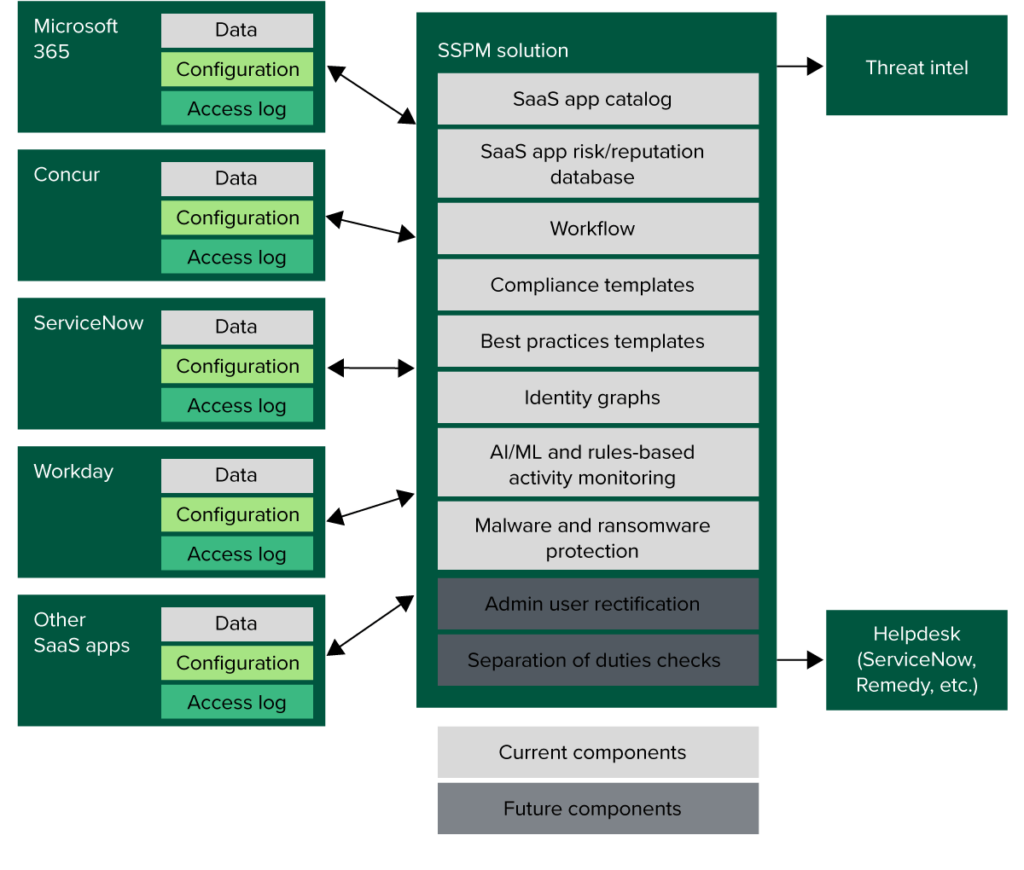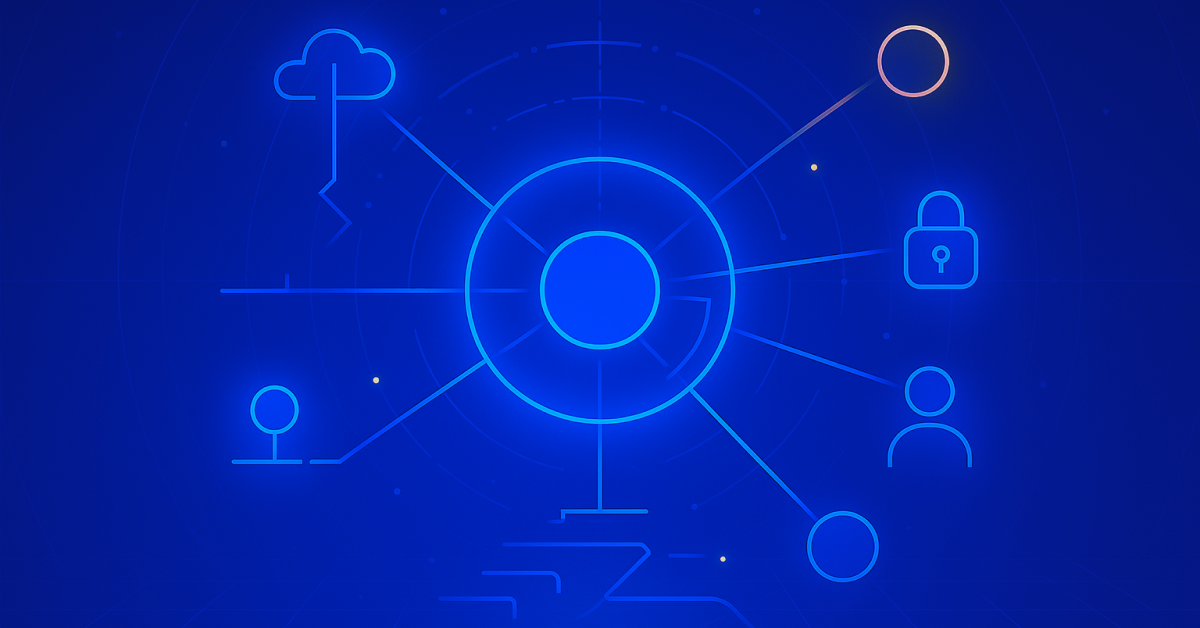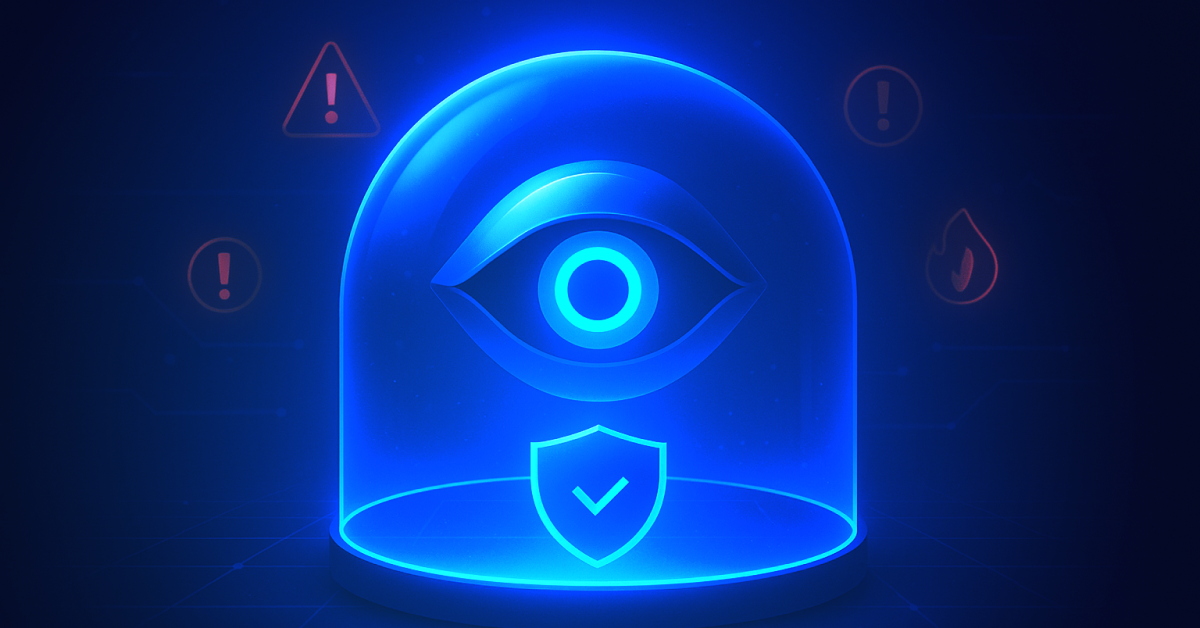We’re thrilled to share that AppOmni is recognized as a Notable Vendor by Forrester Research in its report, The SaaS Security Posture Management Landscape, Q2 2023.
This overview gives a nod to the changing market landscape, where customers now have a pronounced need for strong cloud data protection as they move sensitive and valuable data into SaaS apps.
In this blog, we discuss 3 key takeaways from this report and why security and IT teams should consider SSPM.
Top Use Cases of SSPM
Forrester identified these criteria as the most important use cases of SSPM sought by customers and addressed by AppOmni:
- Protecting cloud data via high-risk user identification and SaaS configuration drift detection functionalities
- Detecting and remediating misconfigurations in SaaS apps
- Controlling business and admin user access to SaaS apps
An industry-leading SSPM solution like AppOmni ensures least privilege access enforcement and continuously monitors SaaS apps to identify drift from established security baselines.
The AppOmni platform continuously monitors SaaS activity and event logs, normalizes data, and delivers security alerts with actionable context and guided steps for remediation – improving security outcomes.

SSPM Addresses Growing Need for Data Protection
The average organization uses more than 100 SaaS apps, and it’s common to find that large enterprises have well above 500 to 1,000 SaaS apps in use. The typical organization’s SaaS ecosystem is continually expanding with SaaS apps adopted on an on-demand basis by all lines of business.
Misconfiguration of SaaS permissions and exposed API keys can dramatically increase the chance of data leakage to the public Internet. They’re also frequent targets for threat actors seeking to compromise an organization’s SaaS estate. Data leaks reinforce the need for SSPM to protect cloud data and sensitive information (e.g. PII, PHI, secrets and keys).
Additionally, every SaaS platform has their own language for logging, privilege access controls, API integrations, and SaaS-to-SaaS connections, making it an impossible manual task for security teams to translate. Companies also lack skilled admins to stay ahead of critical configuration changes for even one SaaS app, let alone at scale across the SaaS estate.
Think of SSPM as an extension of your security team that brings advanced SaaS security capabilities like cyber risk observability into your SaaS environment. Couple that with actionable insights and guided steps for remediation, you’ll see why SSPM solutions have become essential in the security stack.
An SSPM solution brings relief to overworked security teams, reduces security workloads and burnout risk, enables security at scale, and diminishes the attack surface.
The SSPM Market: Evolution and Dynamics
Vendors that can scale to support a broader number of SaaS apps and build out identity-based protections and threat detection capabilities will position themselves to successfully deliver these crucial functions to customers.
Forrester also notes that “the buildout and customization of compliance templates indicates that firms need to bring in SSPM solutions to beef-up and defend their SaaS app configurations in audits.” An SSPM solution should allow you to achieve and maintain regulatory compliance across CIS, ISO, HIPAA, NIST, and SOX cybersecurity standards.
Access your complimentary copy of the Forrester report here.
Getting started on your SSPM journey
First step is taking inventory of your highest priority SaaS apps and sensitive data that need protection. AppOmni recommends taking a risk-based approach to achieve this.
Next, when you’re ready to select a SSPM solution, validate that it can effectively drive down cybersecurity risk across your SaaS estate. This can only be realized by adopting a best-in-breed solution that enables continuous monitoring and visibility into configuration settings, data access, and SaaS-to-SaaS connections.
Finally, schedule a demo to see our SSPM solution in action and learn why AppOmni trusted by the world’s most innovative companies.
Related Resources
-

ServiceNow Agentic AI: What It Means for CISOs, SOC Analysts, SaaS Admins, and Developers
Agentic AI expands ServiceNow risk. Read why securing AI agents matters for CISOs, InfoSec, SOC, admins, and IT leaders.
-

AppOmni Expands AI Security with Agentic AI Security for ServiceNow
See how AppOmni AgentGuard defends ServiceNow AI agents from prompt injection and access risks, building trust and compliance across platforms.
-

Why Frost & Sullivan named AppOmni a Growth & Innovation Leader in the 2025 Frost Radar™ for SSPM
Frost & Sullivan recognized AppOmni’s leadership in SaaS security innovation, highlighting our AI, Zero Trust, and app-level depth.